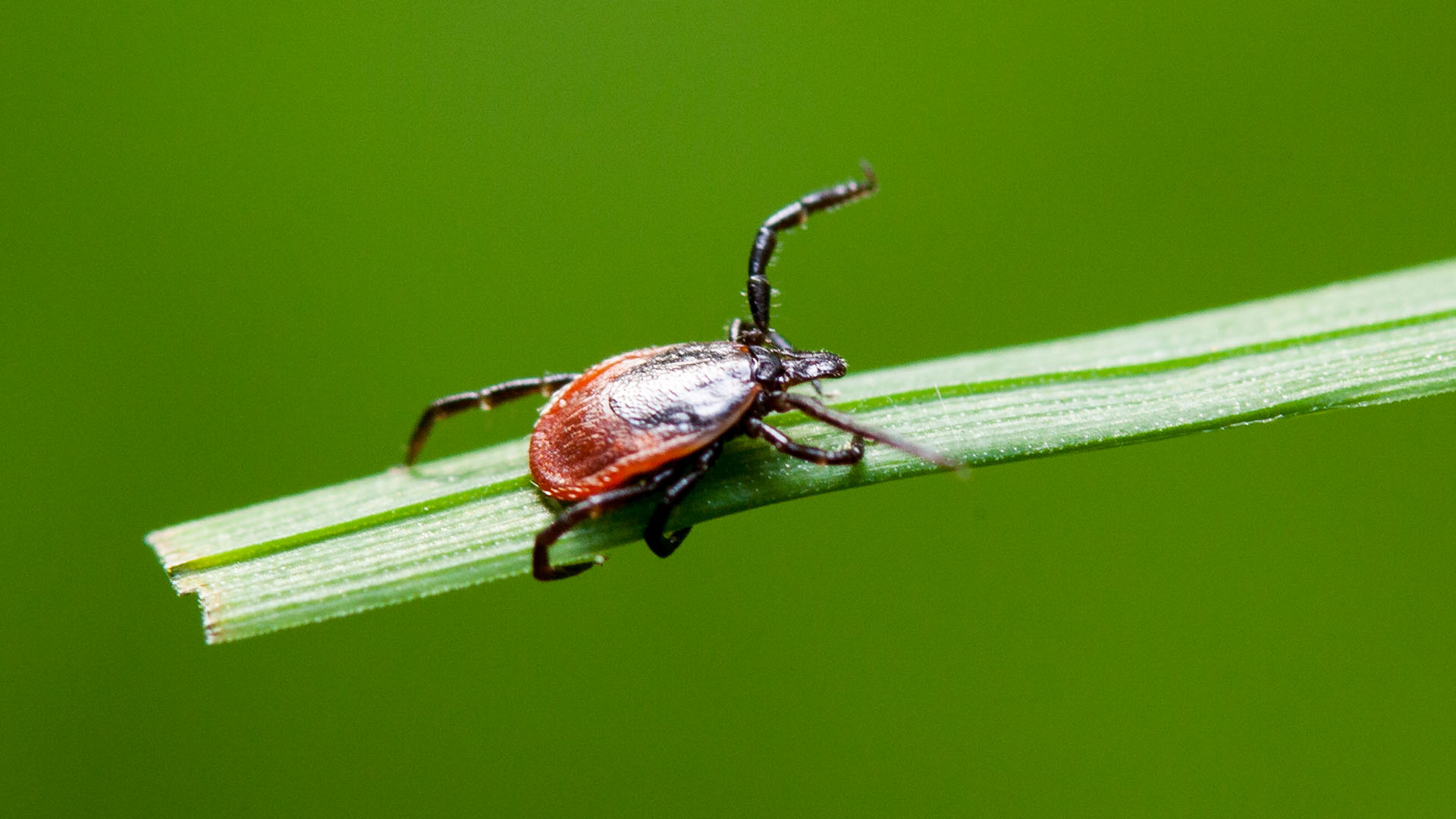
A protein found in human sweat may offer protection from Lyme disease, a bacterial infection spread by ticks, research suggests.
For a new study, published March in the journal Nature Communications, scientists scoured huge datasets of human genetic information and compared the genes of people with and without Lyme disease. The researchers uncovered three genes associated with a higher risk of infection, two of which were known to be associated with the disease. However, the third gene — which makes a type of protein found in the skin and sweat — had never been tied to it.
This mutant gene carried by those with Lyme disease seemed to boost their susceptibility to the disease. But the researchers discovered that the standard, non-variant version of the gene can actually prevent the growth of Lyme disease-causing bacteria — at least in lab dishes and mice. About 60% of people are thought to carry the standard version of the gene, they noted.
Related: New anti-tick vaccine prevented Lyme disease (in guinea pigs)
This type of study, which sifts through a huge number of people's genomes for genes associated with a specific condition, had never been done for Lyme disease, co-senior author Michal Tal, a principal scientist at the Massachusetts Institute of Technology, told Live Science. They started with data from the FinnGen project, which contains genetic information from more than 410,000 Finnish people, including over 7,000 individuals diagnosed with Lyme disease.
That work revealed the mysterious variant of a gene that makes a protein called secretoglobin family 1D member 2 (SCGB1D2). Secretoglobins are small proteins secreted by cells, and in this case are found in sweat glands.
The researchers initially posted this discovery online in a preprint paper, and before long, they heard from a group in Estonia that had uncovered the same gene variant while examining data from the Estonian Biobank. The repository contains data from more than 210,000 Estonian people, including 18,000 with Lyme disease.
The two groups decided to collaborate, incorporating the additional data into the study now published in Nature Communications. In both sets of data, people with the mutant version of SCGB1D2 were more likely to be diagnosed with Lyme disease.
The researchers then conducted lab-dish experiments where they exposed Borrelia burgdorferi, the bacteria behind Lyme disease, to a mutant and standard version of the sweat protein. The standard version suppressed the bacteria's growth, but twice as much of the mutant version was needed to prevent the bacteria growing.
They also injected both the standard version of the secretoglobin and a different secretoglobin typically found in the lungs into mice and exposed the rodents to the bacteria. Mice that were injected with the lung secretoglobin developed Lyme disease, but those given the standard version of SCGB1D2 did not, even after a month of the researchers watching them for signs of infection.
The discovery of this gene holds great potential for improving scientists' understanding of Lyme disease, Janis Weis, a professor in the Department of Pathology at the University of Utah in Salt Lake City, who was not involved in the study, told Live Science.
In general, many secretoglobins line the lungs and other organs and play a role in the body's immune response. Unraveling the role of SCGB1D2 in Lyme disease might help researchers gain insight into the condition, addressing the question of why about 5% to 10% of those infected don't respond well to treatment and can develop long-term health problems, Weis said.
The study has several limitations, including that it examines only populations from Finland and Estonia, Weis noted. Future research could incorporate genetic information from additional demographics, she said.
Then there's the mystery of what biological role the protein normally plays in humans and how it interacts with the ticks that transmit Lyme disease, Hanna Ollila, a group leader at the University of Helsinki and an instructor at Massachusetts General Hospital told Live Science.
"It's a little bit like a detective story," she said.
Ever wonder why some people build muscle more easily than others or why freckles come out in the sun? Send us your questions about how the human body works to community@livescience.com with the subject line "Health Desk Q," and you may see your question answered on the website!






